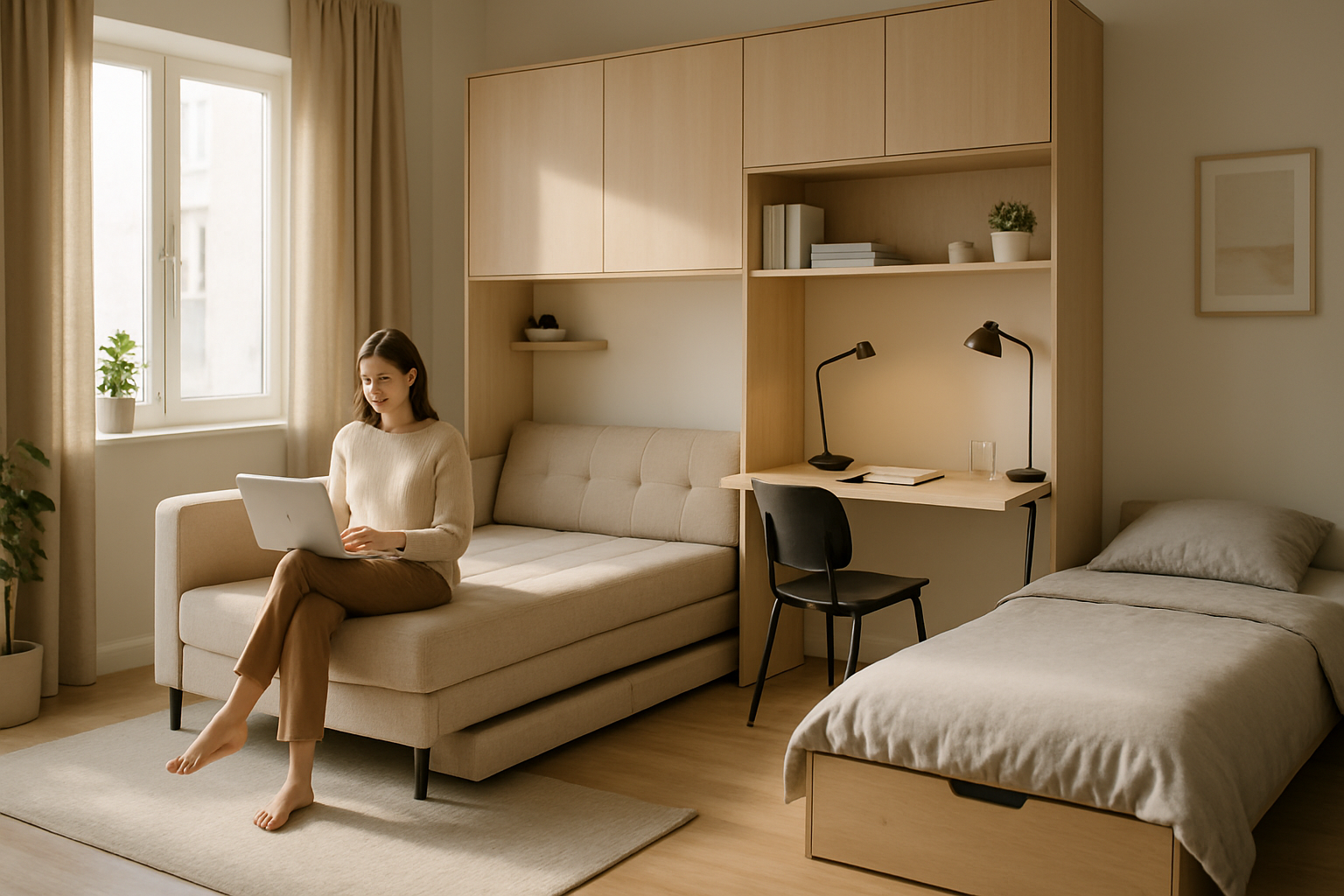Room Dividers: Creative Solutions for Space Organization and Privacy
Room dividers offer versatile solutions to transform living and working environments, creating distinct zones while maintaining an open feel. These functional design elements serve multiple purposes beyond simple space separation, including adding visual interest, improving privacy, and enhancing the overall aesthetic of a room. From apartments to open-concept homes and office spaces, room dividers have become essential tools for those looking to maximize functionality without permanent structural changes.

Design Ideas for Room Dividers in Small and Large Spaces
In small spaces, room dividers need to be lightweight and multifunctional. Folding screens provide flexibility as they can be easily moved or collapsed when not needed. For studio apartments, consider using a bookshelf divider that serves dual purposes—creating separation while providing storage. The key is selecting dividers that don’t overwhelm the limited square footage.
Larger spaces benefit from more substantial room dividers that make expansive areas feel intentional and intimate. Ceiling-mounted curtain tracks allow for dramatic fabric dividers that can span considerable distances. Partial walls or built-in dividers with glass elements maintain openness while defining zones. For maximum impact in spacious areas, consider double-sided bookcases, which provide storage and display opportunities from both sides while clearly delineating different functional zones.
Creating Privacy and Defining Functional Areas with Room Dividers
Privacy remains one of the primary reasons people install room dividers. In shared living situations, dividers can transform a portion of a living room into a temporary bedroom or private workspace. Acoustic panels and sound-absorbing materials incorporated into dividers help reduce noise transfer between areas—ideal for households with multiple activities happening simultaneously.
Functional area definition becomes particularly important in open-concept spaces. A strategically placed divider can distinguish between a dining area and living room without disrupting visual flow. In home offices, dividers create a psychological boundary between work and leisure spaces, helping maintain work-life balance. The height and opacity of dividers can be customized depending on the degree of separation needed—fully opaque dividers for complete privacy or partially see-through options for gentle space definition while maintaining connection.
Customization and Personalization Ideas for Room Dividers
Personalized room dividers transform practical elements into statement pieces. DIY options include painting folding screens in coordinating colors, adding wallpaper to plain panels, or incorporating family photos into a display-style divider. For the creatively inclined, macramé or hanging plants can form natural, artisanal dividers that add texture and life to a space.
Material selection offers endless customization possibilities. Wood slats create a warm, contemporary feel while metal frames with fabric inserts offer industrial-modern appeal. Glass blocks or panels allow light transmission while maintaining separation. For those seeking truly unique options, vintage doors repurposed as dividers or suspended collections of objects like colored glass bottles can create artistic installations that divide space while expressing personal style.
Space-Saving Solutions Using Room Dividers in Apartments or Offices
In compact apartments, multifunctional dividers maximize limited square footage. Murphy bed systems with integrated shelving act as dividers during the day and transform into sleeping areas at night. Sliding door dividers occupy minimal space while offering complete closure when needed. Extendable or accordion-style dividers can be expanded or contracted depending on changing requirements.
Office environments benefit from modular divider systems that adapt to evolving workplace needs. Mobile whiteboard dividers serve both as spatial separators and functional work surfaces. Hanging dividers suspended from ceiling tracks preserve floor space while defining meeting areas or focus zones. Plant dividers using vertical gardens not only separate space but improve air quality and workplace wellbeing—an increasingly popular option in biophilic office design.
Common Mistakes to Avoid When Choosing or Placing Room Dividers
Selecting dividers that are proportionally inappropriate represents one of the most frequent errors. Dividers that are too tall can make ceilings appear lower, while those too short fail to effectively separate space. Similarly, dividers that are too visually heavy can overwhelm smaller rooms, making them feel cramped rather than cozy.
Placement errors often include positioning dividers in ways that disrupt natural traffic flow or block light sources. Dividers should complement the room’s existing architecture rather than fight against it. Another common mistake is choosing dividers that clash stylistically with surrounding décor. Even the most functional divider will seem out of place if its design language contradicts the established aesthetic of the space.
Material selection mistakes include choosing dividers that don’t meet practical requirements—like using fabric dividers in areas that need sound insulation or selecting non-washable materials for dining areas prone to spills. Finally, many people underestimate the stability needs of freestanding dividers, leading to safety concerns, particularly in households with children or pets.
Conclusion
Room dividers represent far more than simple space separators. When thoughtfully selected and strategically placed, they enhance functionality, improve privacy, and contribute to the aesthetic appeal of both small and large spaces. From multifunctional storage solutions to artistic statement pieces, the range of divider options continues to expand, offering creative solutions for virtually any spatial challenge. By avoiding common mistakes and embracing customization opportunities, room dividers can transform problematic spaces into well-organized, visually appealing environments tailored to individual needs.




